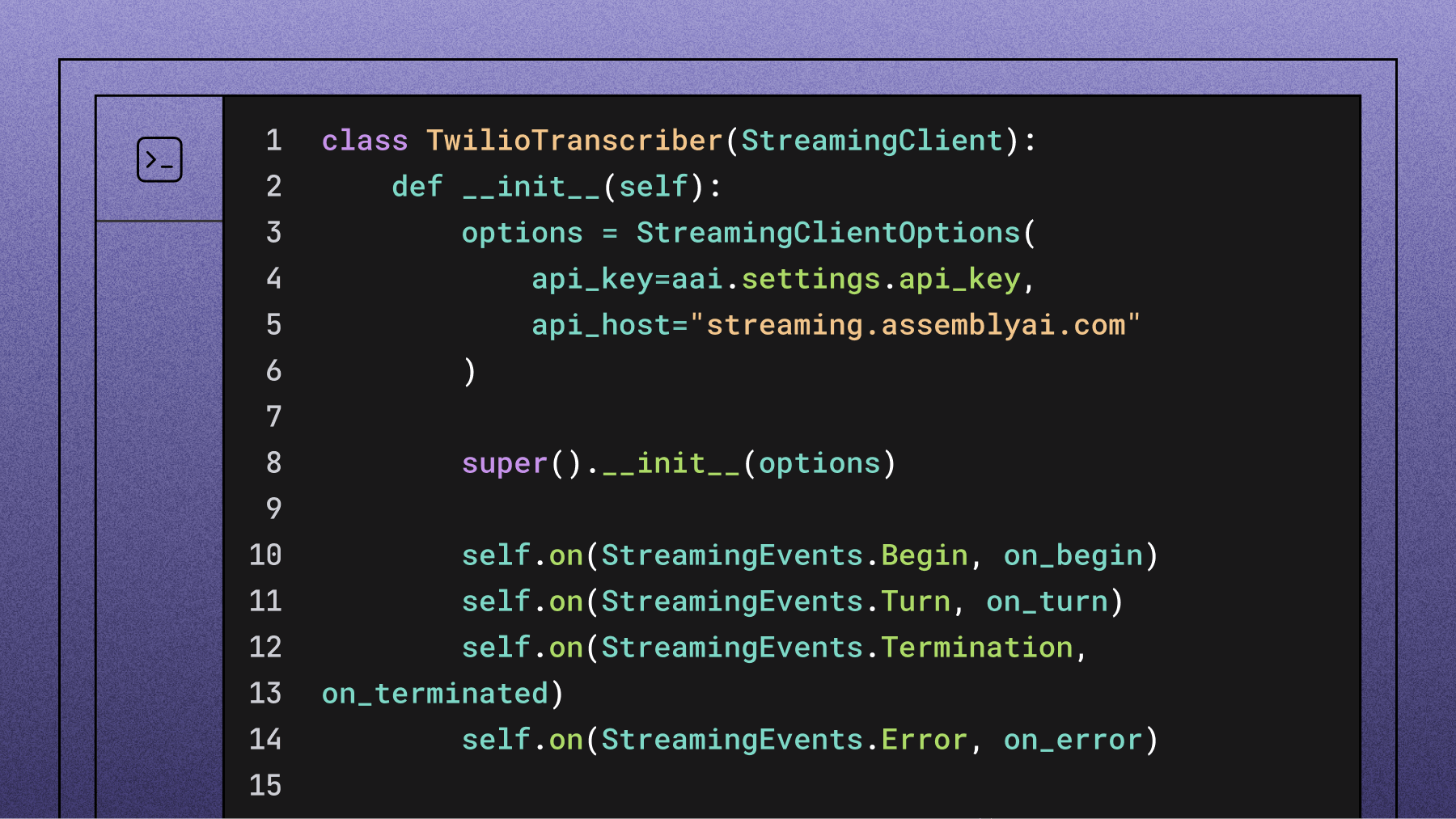Filter profanity from audio files using Python
Learn how to filter profanity out of audio and video files with fewer than 10 lines of code in this tutorial



With a greater amount of online interaction happening every day, it’s become increasingly difficult to ensure that these interactions are safe and constructive. Profanity filtering is a common technique used for this purpose across various applications, from social media to customer support. Profanity detection artificial intelligence models now enable developers to automatically and efficiently filter out offensive language at scale, facilitating the development of safe and welcoming digital environments.
In this tutorial, we’ll learn how to use Python to filter profanity from audio files. By the end of this guide, you'll be equipped to implement this functionality in just a few lines of code, enhancing both user experience and content compliance.
Here is the audio file we will be running profanity filtering on, along with the filtered output, where the asterisks represent harmful speech that has automatically been filtered:
Profanity filtering
Filtering profanity from audio and video files is easy as s*** with AssemblyAI.
#Step 1: Set up your environment
First, make sure Python is installed on your system if it is not already. Then, install the assemblyai package, which allows developers to easily use AssemblyAI’s API.
pip install assemblyai
Next, get a free AssemblyAI API key here; or, if you already have one, you can copy it from your Dashboard. Once you’ve copied your API key, set it as an environment variable on your machine, which allows your requests to be automatically authorized when you use the assemblyai package:
# Mac/Linux:
export ASSEMBLYAI_API_KEY=<YOUR_KEY>
# Windows:
set ASSEMBLYAI_API_KEY=<YOUR_KEY>
#Step 2: Transcribe and filter the audio file
Now that our environment is set up, we can submit an audio file for transcription with profanity filtering. For this tutorial, we’ll be using this example file. If you want to use your own file, you can use either a local file on your system or a remote file as long as it is a publicly accessible download URL (when you click the link, it should start downloading in your browser). You can either an audio or a video file.
Create a file called main.py, and then import the assemblyai package and specify the path to the audio file you want to filter profanity from:
import assemblyai as aai# replace with local filepath or your remote file
audio_url = "https://storage.googleapis.com/aai-web-samples/profanity-filtering.mp3"
Next, we create an aai.TranscriptionConfig object, in which we specify the settings for our transcription. In this case, we enable profanity filtering via filter_profanity=True. Then we create an aai.Transcriber object, which actually performs transcription. Passing this config into the aai.Transcriber causes it to apply profanity filtering to any file it transcribes.
config = aai.TranscriptionConfig(filter_profanity=True)
transcriber = aai.Transcriber(config=config)
Finally, we use the transcribe method of the Transcriber object to transcribe the audio file with profanity filtering:
transcript = transcriber.transcribe(audio_url)
#Step 3: Print the filtered text
We can print the profanity-filtered text as follows:
if not transcript.error:
print(transcript.text)else:
raise RuntimeError(f"There was an error transcribing the file: {transcript.error}")
Save your file and execute it by running python main.py in the project directory. You'll see the profanity-filtered audio transcript printed to the terminal - if you used the default file from above you’ll see the following output printed to the terminal:
Filtering profanity from audio and video files is easy as s*** with AssemblyAI.
The transcript contains a litany of information about the transcribed audio file, like word-level timestamps and more, which you can access through the object’s attributes. Check out our docs to learn more about Transcript objects and the other information you can get back from our API.
Alternatively, feel free to check out our blog for more learning resources and tutorials, like this video on how to build a talking AI with LLaMa 3:
Lorem ipsum dolor sit amet, consectetur adipiscing elit, sed do eiusmod tempor incididunt ut labore et dolore magna aliqua. Ut enim ad minim veniam, quis nostrud exercitation ullamco laboris nisi ut aliquip ex ea commodo consequat. Duis aute irure dolor in reprehenderit in voluptate velit esse cillum dolore eu fugiat nulla pariatur.






